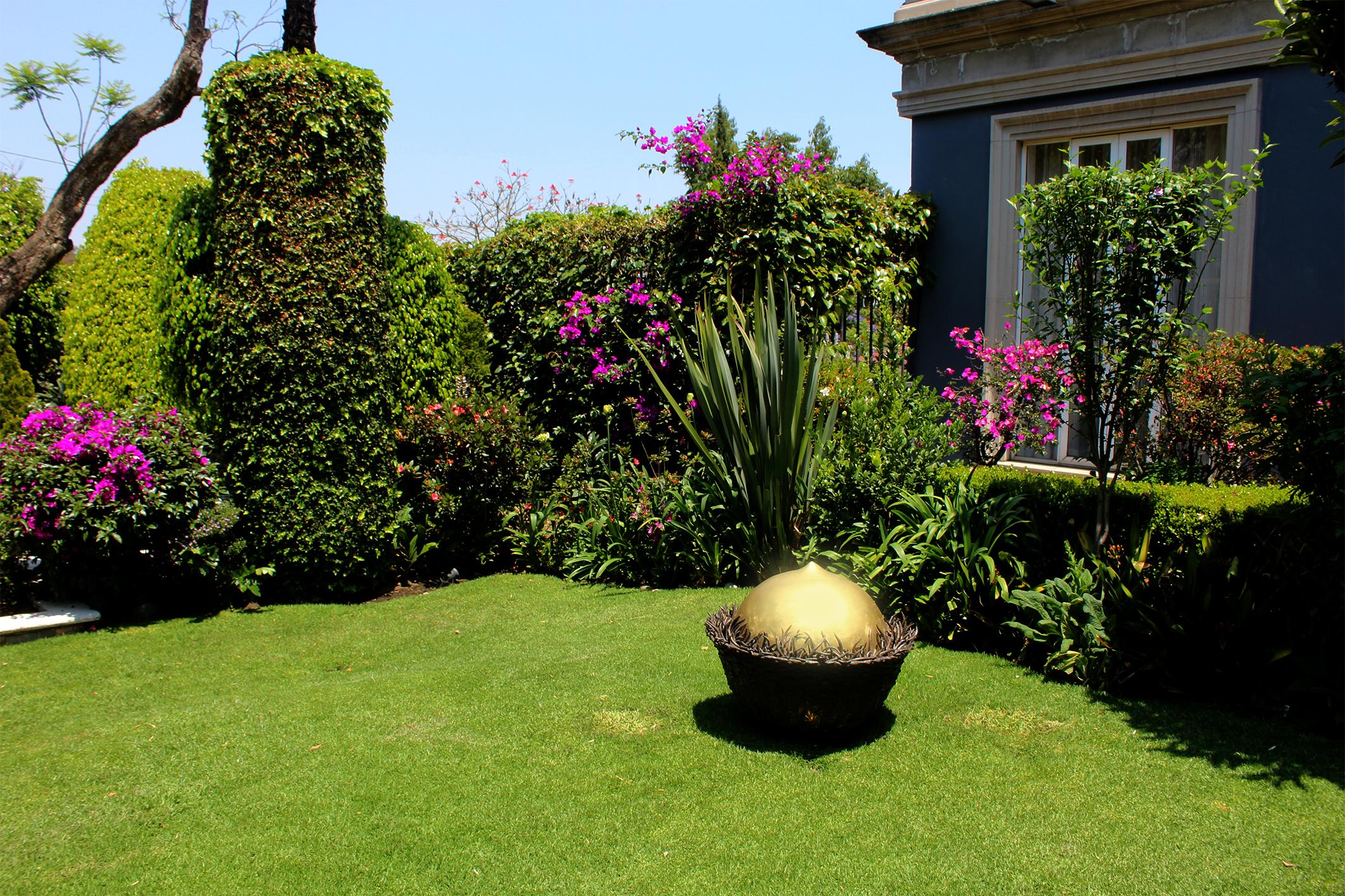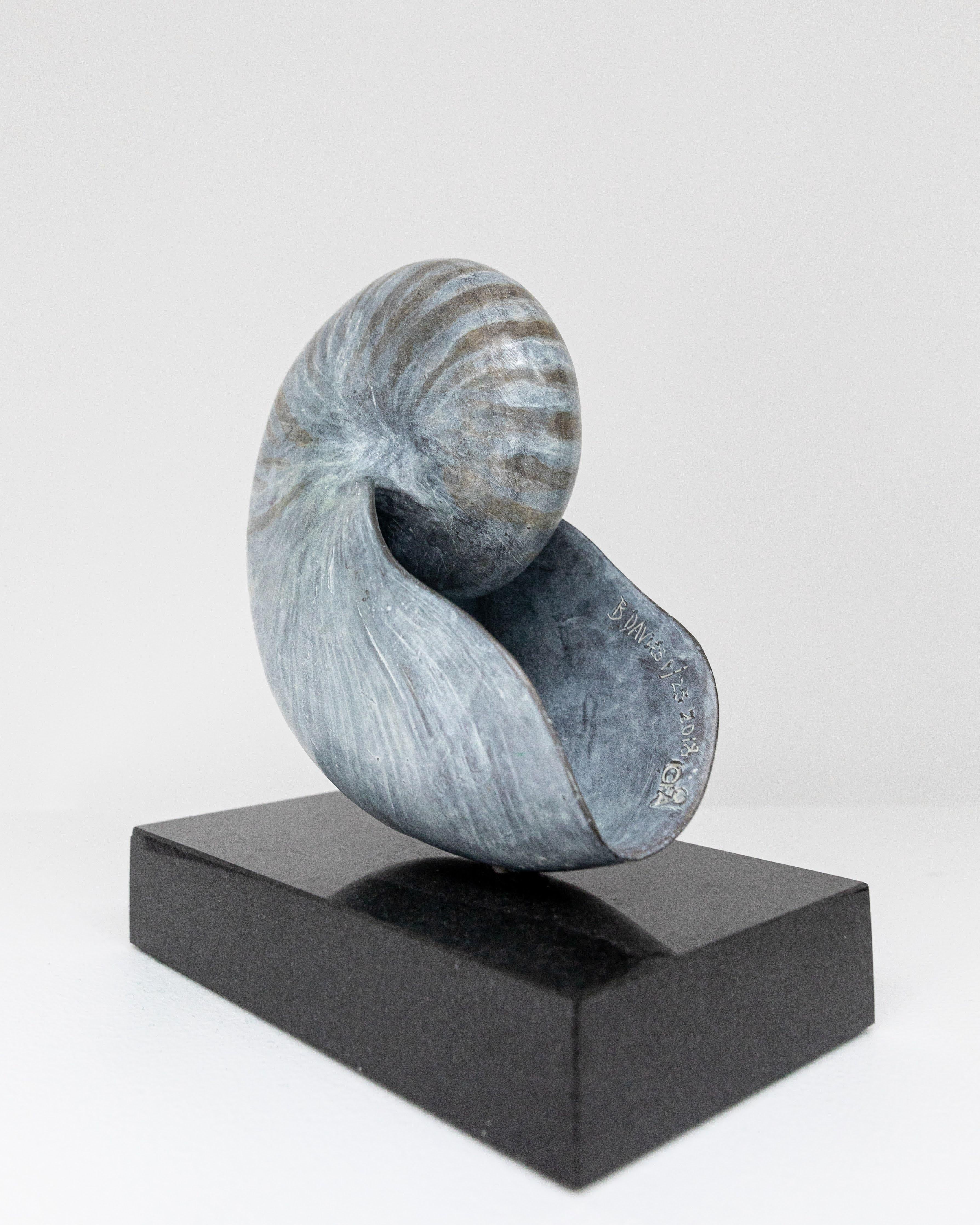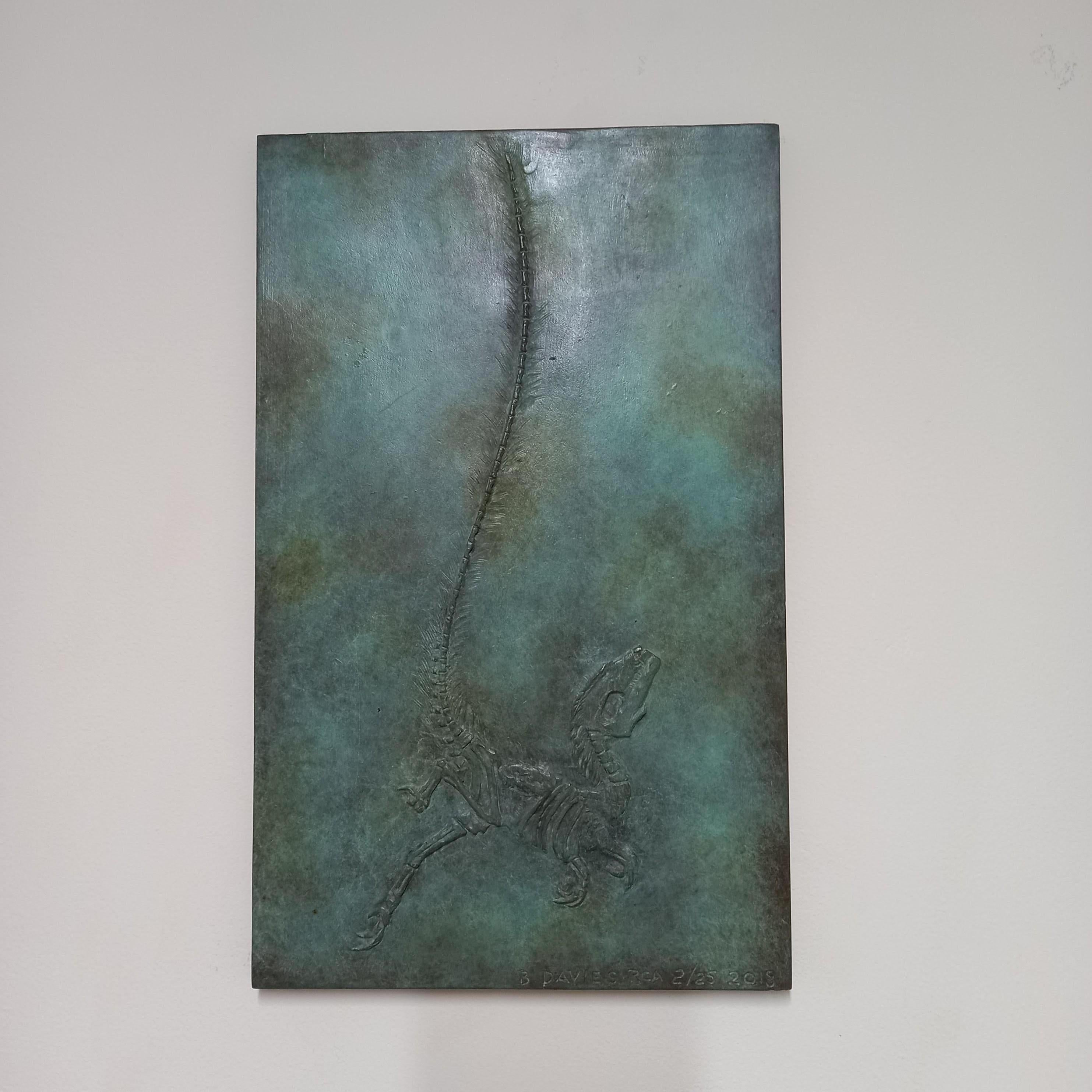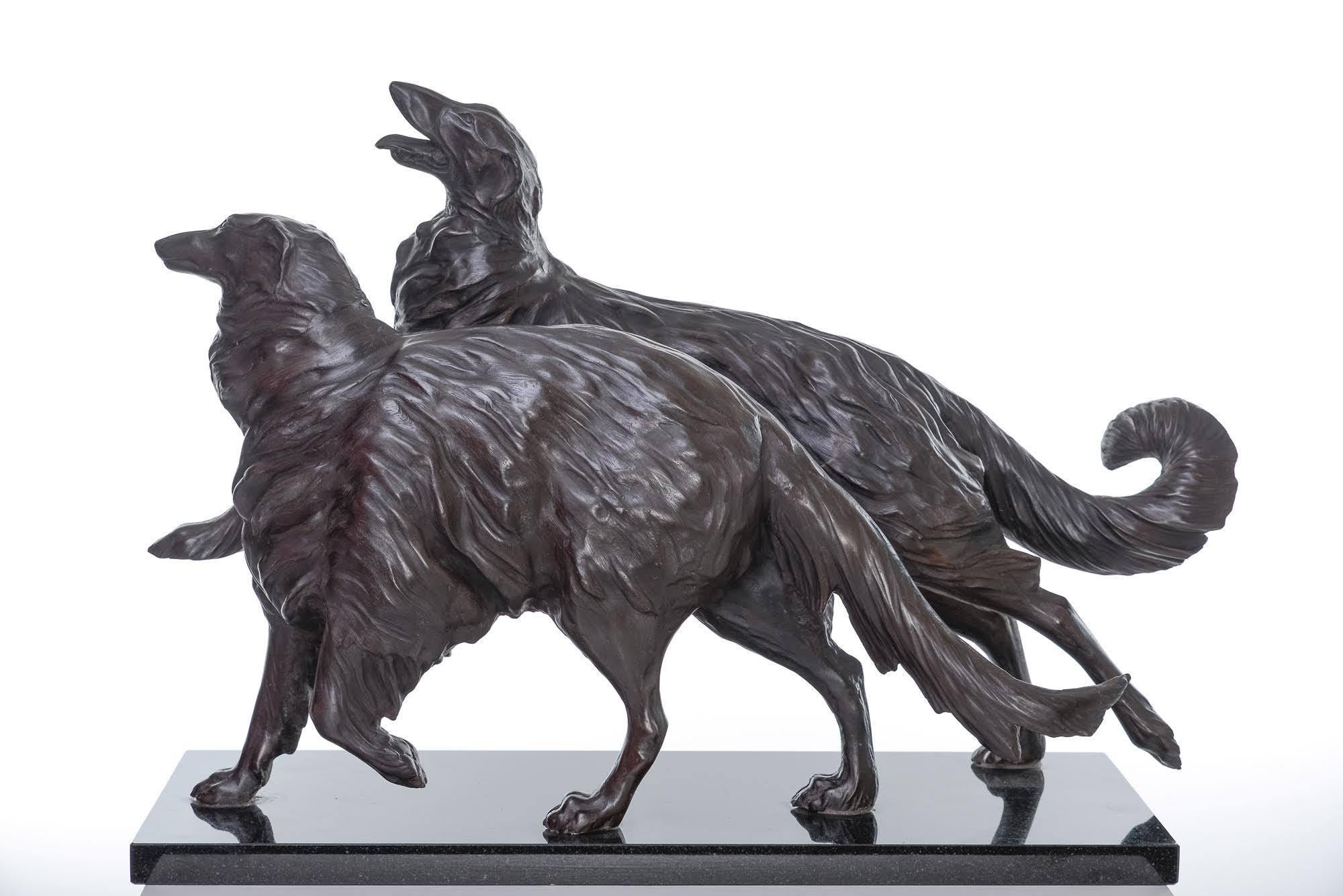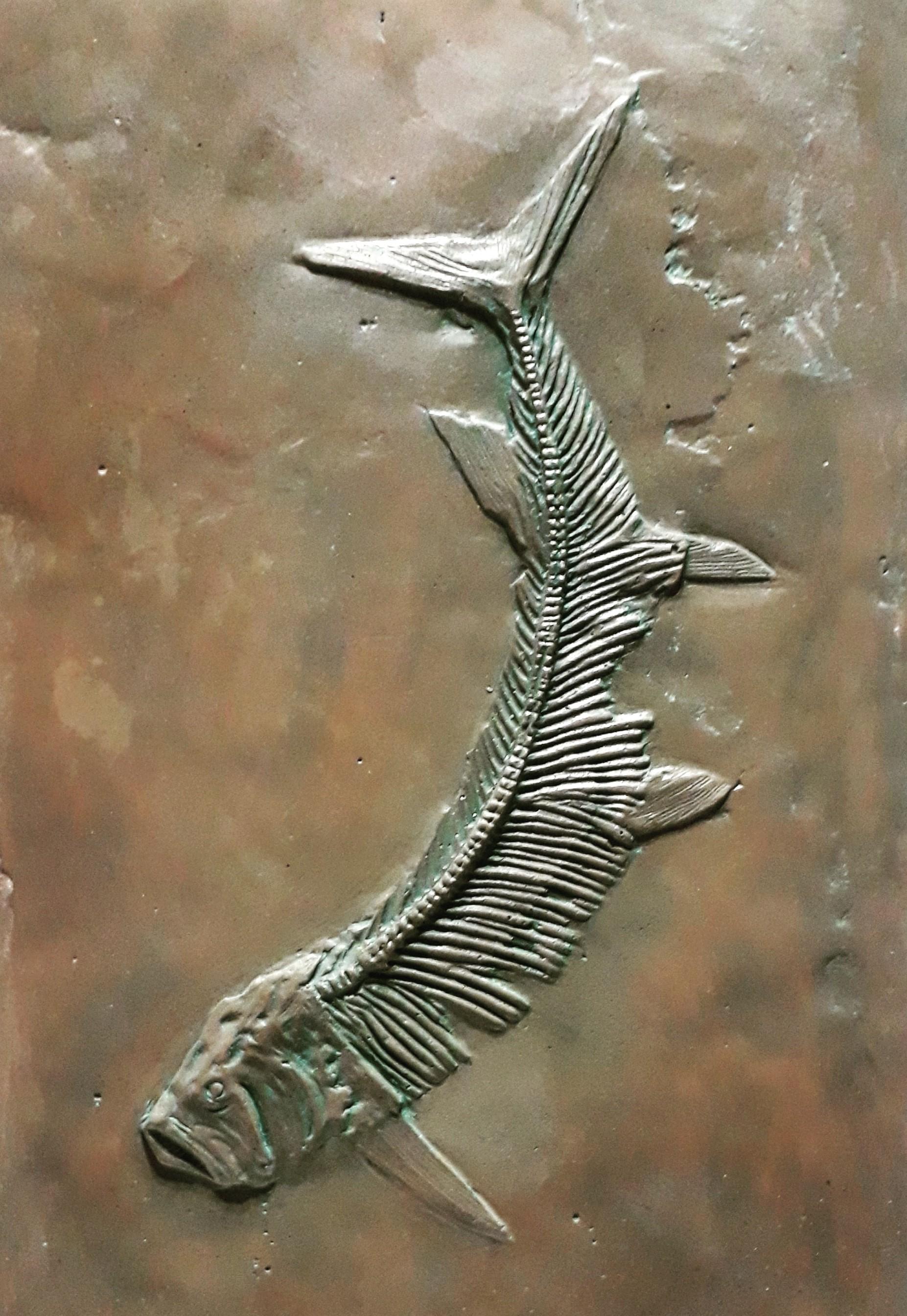Want more images or videos?
Request additional images or videos from the seller
1 of 2
Stenopterygius Quadriscissus2019
2019
About the Item
Stenopterygius quadriscissus is an ichthyosaur, an extinct animal that lived during the Jurassic period whose body shape closely resembled that of today's fast-swimming fishes such as the tuna. This well-preserved specimen is an ichthyosaur that died and was buried while giving birth to live young. This specimen shows the actual birth of baby ichthyosaur, this helps prove without doubt that ichthyosaurs were viviparous reptiles, which in laymens terms means that they gave birth to live young instead of laying eggs. Although this might seem strange, live birth is actually well documented in some species of reptiles, including some modern species of snake and lizard alive today. Baby ichthyosaurs are also known to be born tail first so that they didn’t drown while being passed out of the birth canal.
Like with the majority of other icthyosaurs, Stenopterygius was a pelagic (open seas) hunter of fish and cephalopods like squid. In this environment its streamlined body would have afforded Stenopterygius with a high degree of speed and mobility, allowing it to hunt in a similar manner to a dolphin. 12 to 14 weeks from confirmation of order to carrier collection from my studio. To be cast in bronze with a backplate to mount on wall. Signed, dated and numbered with the foundry stamp. Limited edition of 25. To be patinated to the buyers choice of colour.
- Attributed to:Barry Davies (1962, Welsh)
- Creation Year:2019
- Dimensions:Height: 7.49 in (19 cm)Width: 12.21 in (31 cm)Depth: 0.79 in (2 cm)
- Medium:
- Movement & Style:
- Period:
- Condition:
- Gallery Location:Oswestry, GB
- Reference Number:1stDibs: LU2437214051012
About the Seller
5.0
Vetted Seller
These experienced sellers undergo a comprehensive evaluation by our team of in-house experts.
Established in 1989
1stDibs seller since 2023
- ShippingRetrieving quote...Ships From: Oswestry, United Kingdom
- Return PolicyA return for this item may be initiated within 14 days of delivery.
More From This SellerView All
- NautilusLocated in Oswestry, GBThe Nautilus shell is an excellent example of mathematics inherent within lifeforms of the natural world. As Davies consistently uses the 'golden ratio' (1:1.618) to proportion his work, he thought it important to exemplify this in his subject matter. The Fibonacci sequence (where each number is the sum of the two preceding numbers) and the logarithmic spiral are also inherent here. The bronze shell is mounted on a black granite base in a way that creates an optical illusion suggesting it is levitating above the base. This bronze Nautilus...Category
2010s Naturalistic Figurative Sculptures
MaterialsGranite, Bronze
- Sinosaurusopteryx PrimaLocated in Oswestry, GBSinosaurusopterx PrimaCategory
15th Century and Earlier Naturalistic Figurative Sculptures
MaterialsBronze
- BorzoisLocated in Oswestry, GBBorzois or Russian wolfhounds originated in the 17th century and were bred and prized by the Russian aristocracy for their elegance and beauty. Davies has depicted this pair exhibiti...Category
2010s Naturalistic Figurative Sculptures
MaterialsGranite, Bronze
- XiphactinusLocated in Oswestry, GBXiphactinus (higher classification Ichthyodectidae) lived during the late Cretaceous period 90 - 65 million years ago.It was a predatory fish weighing approximately 1000lbs and measu...Category
15th Century and Earlier Naturalistic Figurative Sculptures
MaterialsBronze
- Trilobite fossilLocated in Oswestry, GBThis trilobite fossil was delicately hand carved in herculite (a fine casting plaster). These marine arthropods first appeared around 521 million years ago living in the Cambrian per...Category
2010s Naturalistic Figurative Sculptures
MaterialsBronze, Gold Leaf
- Snail shellLocated in Oswestry, GBAlways greatly fascinated and sculpturally inspired by a simple yet geometrically complex snail shell. I moulded an actual shell and modelled the base. However the technical difficul...Category
21st Century and Contemporary Naturalistic Figurative Sculptures
MaterialsBronze
You May Also Like
- Elephant Sculpture, Bronze, Mother and Baby Elephant 19th Century, Marble Base.Located in Stockholm, SEA fine patinated bronze sculpture of a mother elephant with her baby elephant by Niels Holm (1860-1933). Signed NIELS HOLM, ELEPHASINDICUS, ENDANGER. Also signed L. RASMUSSEN, KOBENH...Category
Late 19th Century Naturalistic Figurative Sculptures
MaterialsMarble, Bronze
- Bellota 13By María José de la MacorraLocated in Mexico City, CDMX#garden #sculpture #contempraryart #decoration #outdoors #bronze #nature #acorn This large bronze sculpture is a contemporary art piece which can also serve as art for the garden or outdoors. María José de...Category
2010s Naturalistic Figurative Sculptures
MaterialsBronze
- Bronze Spanish naturalistic 19th century sculpture of a young boyLocated in Woodbury, CTAn amazing bronze cast of a little 19th-century boy. The quality of the piece is outstanding, as is the color and patination. There is little known about the painter other than he wo...Category
1890s Naturalistic Figurative Sculptures
MaterialsBronze
- Scultura in ceramica e oro zecchino, api in bronzoLocated in Milan, ITJessica Carroll sa interpretare il mondo delle api con eleganza, originalità e armonia. Le sue sculture in ceramica, oro e bronzo dedicate agli alveari hanno la perfezione della form...Category
2010s Naturalistic Figurative Sculptures
MaterialsGold, Bronze
- Dances with TreesLocated in Washington Depot,, CTBroken limbs and the abstraction of the bodies are meant to suggest that the works have been subjected to the vicissitudes of time, decay by the elements and the damages caused by un...Category
2010s Naturalistic Figurative Sculptures
MaterialsBronze
- A large late 19th century French animalier bronze of a recumbent greyhound dogBy Christophe FratinLocated in Bath, SomersetA large late 19th century bronze figure of a recumbent greyhound after French animalier sculptor Christophe Fratin (1801-1864), with a warm brown patina on a rouge griotte marble base. Signed 'FRATIN' on collar. Bronze length: 37cm Base length: 41cm Bronze height: 18cm Total height: 22cm Christophe Fratin was born in Metz in France in 1801. He first studied sculpture under Pioche in Metz under whom he honed his technical skills. He then became a pupil of the painter Theodore Gericault in Paris where he pursued his career as a sculptor. Fratin first exhibited at the Paris Salon as early as 1831, where he showed ‘Fermer – An English Thoroughbred’. The popularity of Fratin’s sculpture in England had a significant impact on his career. His modelling style reflected his imaginative mind and sense of humour, particularly in his humorous modelling of bears. Fratin was asked to sculpt life-size monuments for French cities, including his home town of Metz. At the Great Exhibition of 1851 in London he was considered the greatest animalier sculptor of the day. Fratin’s bronzes...Category
1880s Naturalistic Figurative Sculptures
MaterialsBronze

